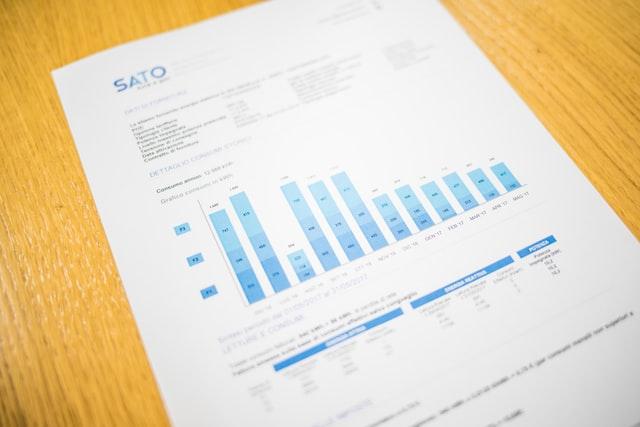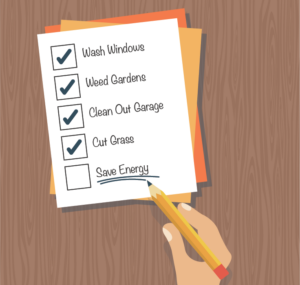What is a home energy report (HER)?
A home energy report (HER) is a detailed analysis of your home energy use, providing useful tips and personalized recommendations to save energy in your home.
Unlike a home energy audit which is conducted by a professional in your home, the analysis presented in home energy reports is usually created using recent energy use data in your homes from smart home devices or smart meters.
Home energy reports can include a breakdown of energy use by category (heating, cooling, lighting), otherwise known as disaggregation, to help identify more specific opportunities to save energy.
Some providers of home energy reports will use behavioral nudging techniques like comparing your home’s energy usage to other similar homes. Seeing how one’s energy use compares to others is a proven tactic that leads to greater reductions in home energy loss. This is why MyHEAT’s Heat Loss Maps include a 1-10 HEAT Rating (an energy label of sorts) which helps energy consumers compare their heat loss to other similar homes, and encourages them to take energy-saving action.
Examples of home energy report programs
Your utility provider may be partnering with companies like Oracle, Uplight and MyHEAT to deliver home energy reports.
1. Oracle
Oracle’s Opower Home Energy Report can be considered an early pioneer of the field. OPower reports can be generated using data from smart meters or other energy monitoring devices, and can be accessed online or through a mobile app. You may already have received an Opower report, but they are typically white-labelled by the utility company providing you with the report.
The report typically includes information such as the home’s current energy consumption, a breakdown of energy usage by category (e.g. heating, cooling, lighting), and a comparison of the home’s energy usage to that of similar homes in the area. Additionally, the report may also include personalized recommendations for energy-efficient upgrades or changes to the home, along with estimated cost savings and payback periods for implementing those changes.
2. Uplight
Uplight’s Home Energy Report focuses on behavioral energy efficiency to achieve energy savings. Uplight claim’s have sent more than 60 million HERs and eHERs in 2019.
Personalized recommendations in Uplight Home Energy Reports can include prompts to decarbonize the home, upgrade to an EV and change energy behaviors.
3. MyHEAT
At MyHEAT we work with local utility providers to offer HEAT Ratings and heat loss assessments to provide a relative measure of how much heat your building might be losing compared to other similar homes nearby
Like OPower and Uplight, MyHEAT uses behavioral science to nudge energy consumers to change behaviors, like turning off lights or lowering home heating temperatures.
While OPower and Uplight mostly use text-based energy analysis to change behaviors, MyHEAT improves on this approach by using unique and personalized heat loss imagery of individual homes at city-scale, to create a spark of interest and make energy visible.
MyHEAT has mapped aerial heat loss for over 5 million buildings in North America, representing 20 million in population. This scale allows for further personalization of the energy analysis provided in MyHEAT’s version of home energy reporting.
Why are home energy reports important?
Electric and gas utilities use HERs to promote energy efficiency and encourage customers to reduce their energy consumption. For utilities, HERs are an important tool that can provide 1%-3% energy savings on average.
HERs can show you how much electricity or gas you are using in your home. They can also help you identify patterns in the amount of energy across different seasons. They can also make recommendations to help you save energy by turning off your lights more frequently, or running your appliances at different times.
How much does a home energy report cost?
If your utility sends you a home energy report, it shouldn’t cost you anything! Ok, this isn’t fully true, as there’s no such thing as a free lunch. In truth, your utility company is likely to be working with a partner (like MyHEAT, or others) and paying them to create the data, analysis and reports that are shared with its customers. The costs to design and implement energy efficiency programs like this are often “rate-based” by your utility, meaning they have received approval to recoup these costs over time from their customers by including a small charge on each bill, usually a few cents.

The future of home energy reports
HERs have been around for many years and are evolving. For example, we are seeing the introduction of new techniques and personalized videos.
If you ask us, we think that MyHEAT will continue to lay a critical role in this evolution. A 2018 study showed that MyHEAT’s visual and comparable heat loss data led to double the gas savings than traditional home energy reports.
If you receive a home energy report from your utility, keep in mind that it can be a useful tool to help you focus on responsible energy use in your home – a win for your wallet and the planet!
For more information on our city-scale heat loss maps, drop us a note – we’re friendly!



